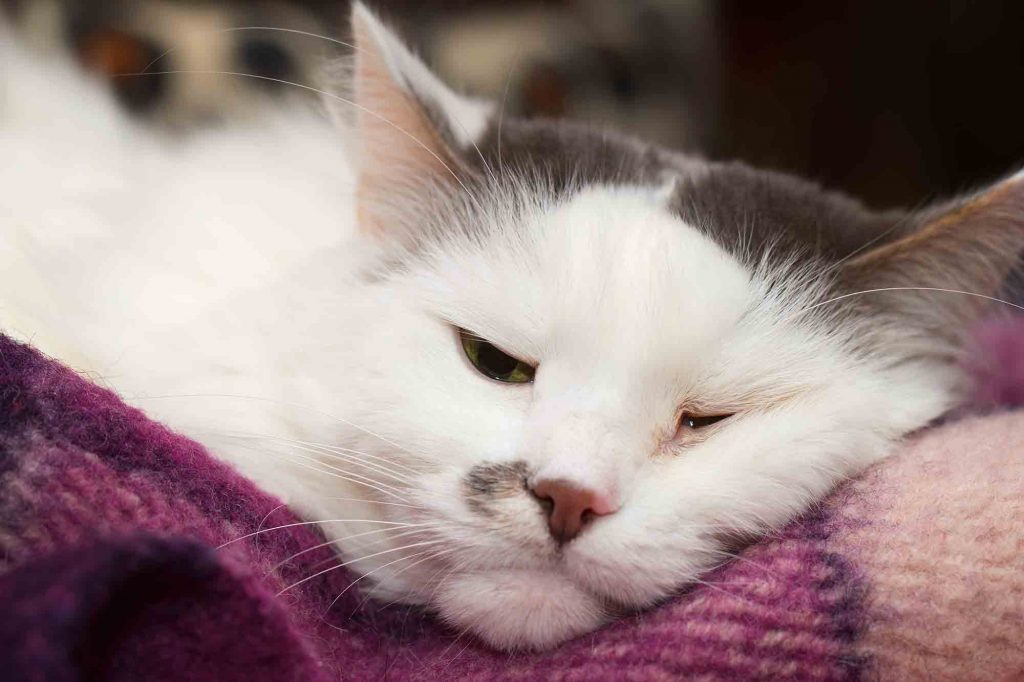 With the exception of, say, a Sphynx breed, cats are built to withstand frosty temperatures. In fact, their warm coats are fairly enviable in January when the windchill cuts right through our own wool coats. The flipside of having a warm, cozy, insulating coat is that, during the summer, the heat can go from slightly uncomfortable to downright dangerous. To reduce the risk of heatstroke and dehydration, we offer the best in summer cat care.
With the exception of, say, a Sphynx breed, cats are built to withstand frosty temperatures. In fact, their warm coats are fairly enviable in January when the windchill cuts right through our own wool coats. The flipside of having a warm, cozy, insulating coat is that, during the summer, the heat can go from slightly uncomfortable to downright dangerous. To reduce the risk of heatstroke and dehydration, we offer the best in summer cat care.
Clever Cats
The good news is that cats instinctively limit physical exertion when it’s terribly hot outside. However, without access to cool shade and fresh water, your cat’s wellbeing can be greatly compromised if left outdoors. This is true for cats of all ages, but kittens and senior cats need extra protection.
The Power Bill
Your cat will benefit from air conditioning and running fans throughout the day. He or she may still find the one sunny spot for the daily afternoon snooze, but airflow and cool temperatures are critically important.
If your cat continues to want outside on scorching hot days, make sure there’s enough shade (create your own shady areas if you lack tall trees).
Fill water containers and freeze a plastic water bottle and leave it, or a wet towel, where your cat likes to lay. It may seem counterintuitive since cats dislike getting wet, but it can reduce the dangers associated with heatstroke.
The Sweaty Business
Cats pant to regulate internal body temperature, and they sweat through their paw pads. However, if that water isn’t replenished and body temperature rises, heat exhaustion and heatstroke are inevitable. Without immediate intervention, organ damage, seizures, coma, and even death are possible outcomes.
See the Signs
Because symptoms can progress quickly, please watch carefully for the following indications that your cat needs help:
- Rectal temperature of 105 degrees or higher
- Rapid breathing
- Fast pulse
- Mobility issues, such as stumbling or disorientation
- Red tongue and mouth
- Vomiting
- Lethargy
Summer Cat Care
As for your cat’s furry coat, keep up with grooming. Brush it out every so often (daily if your cat tolerates it), and keep it free of dirt, dust, loose hairs, and dander. It’s not recommended to shave your cat in the summer. The coat actually insulates your cat in the winter and summer from the cold and heat, respectively. Without the coat in summer, sunburn is likely, increasing the odds of cancer.
What Else?
Summer cat care is easy when you have the right approach and the right tools! A single cardboard box may be just the right thing to keep your cat happy to stay indoors where it’s cool and comfortable. If your cat enjoys the outdoors, only allow access in the evening or early morning.
Lastly, a blog about summer cat care wouldn’t be complete without a quick reminder to never leave your pet in the car for any length of time.
If we can assist you with further questions or concerns, please contact us.
The post Easy as 1-2-3: Paying Attention to Summer Cat Care appeared first on West Park Animal Hospital Blog.

